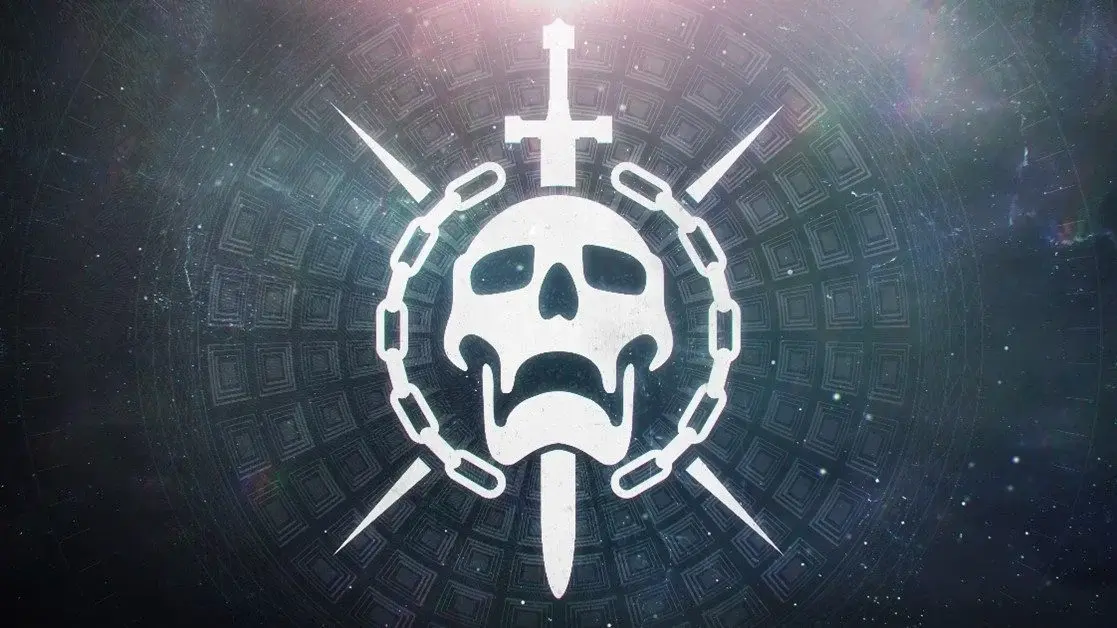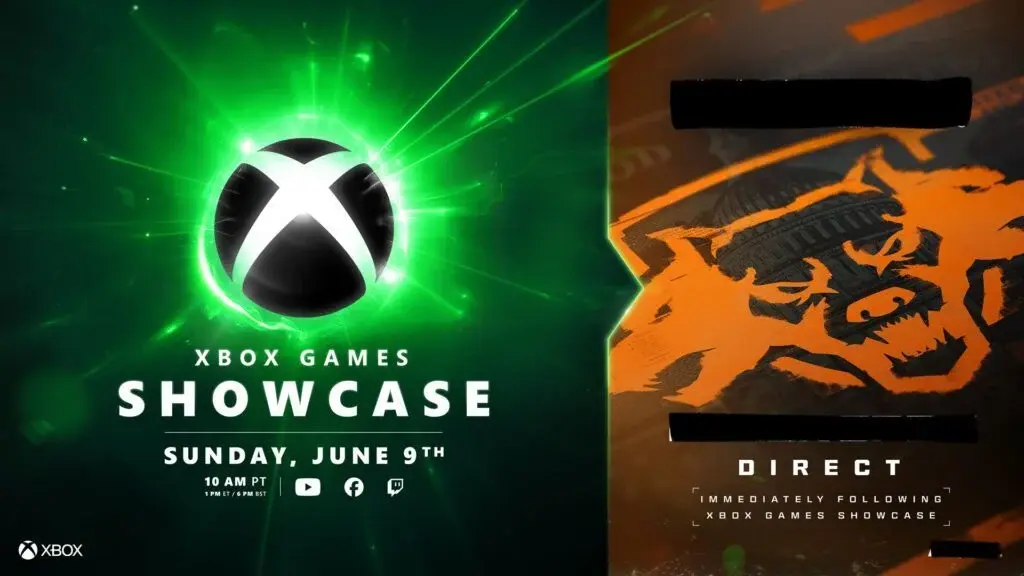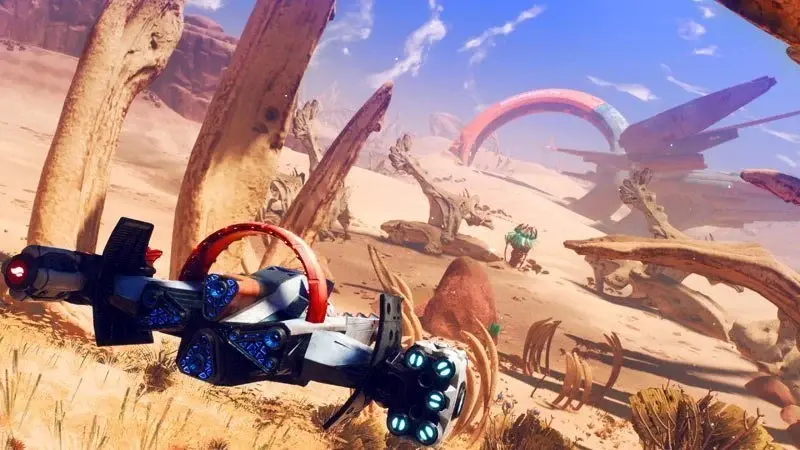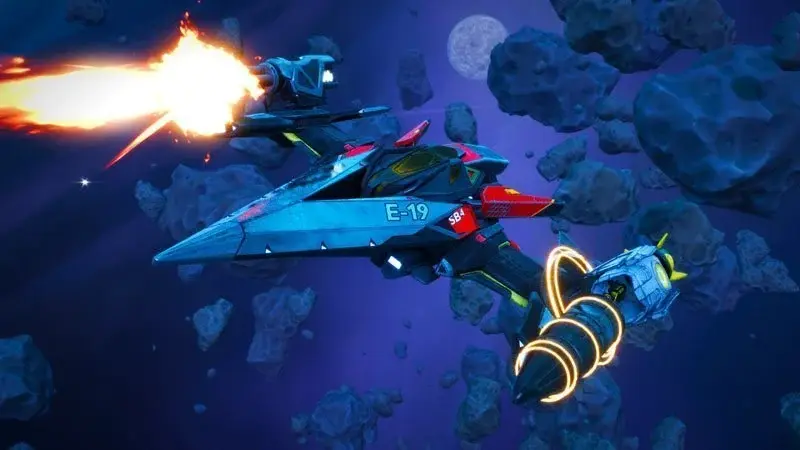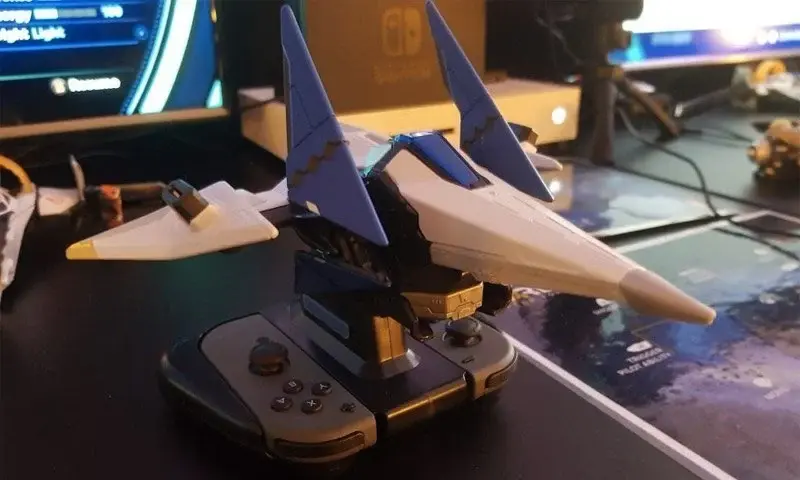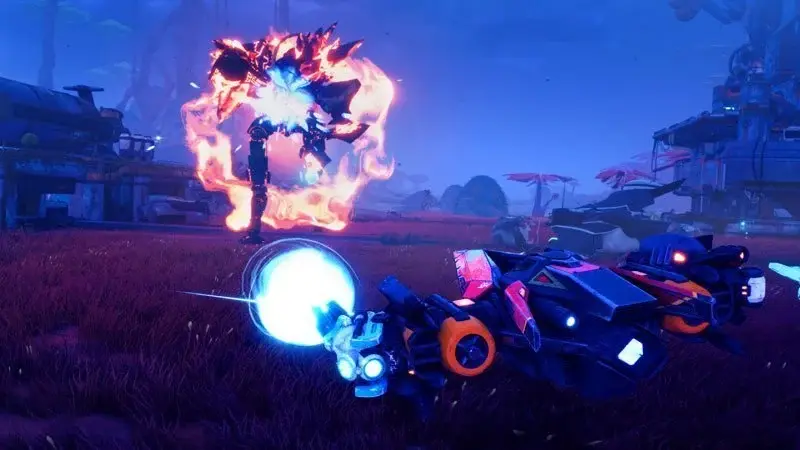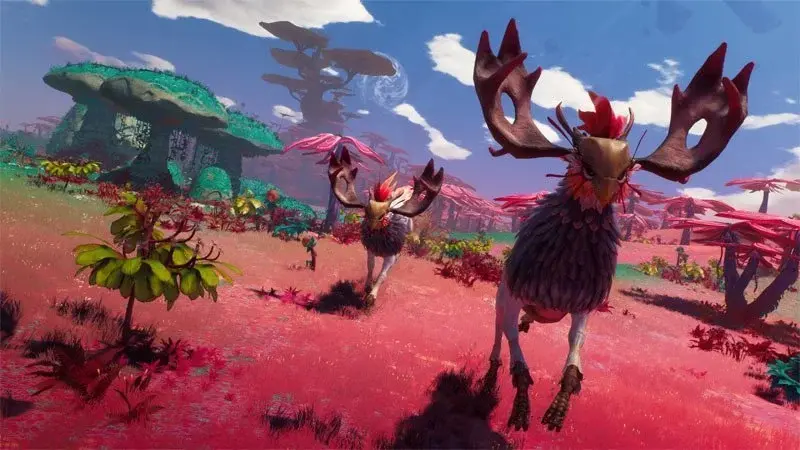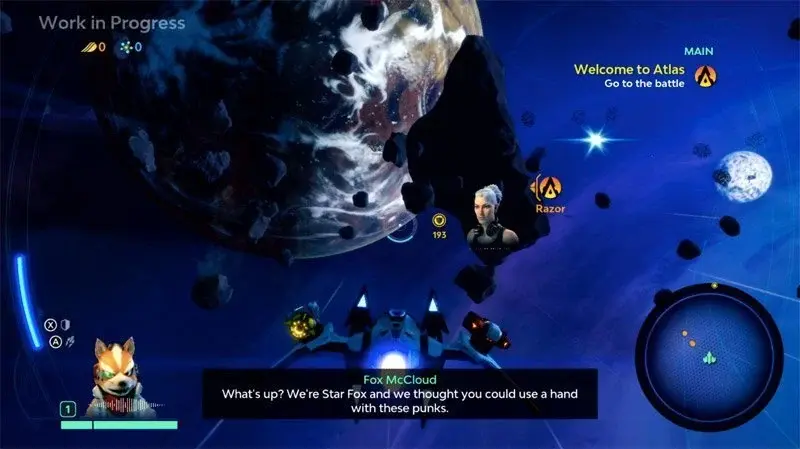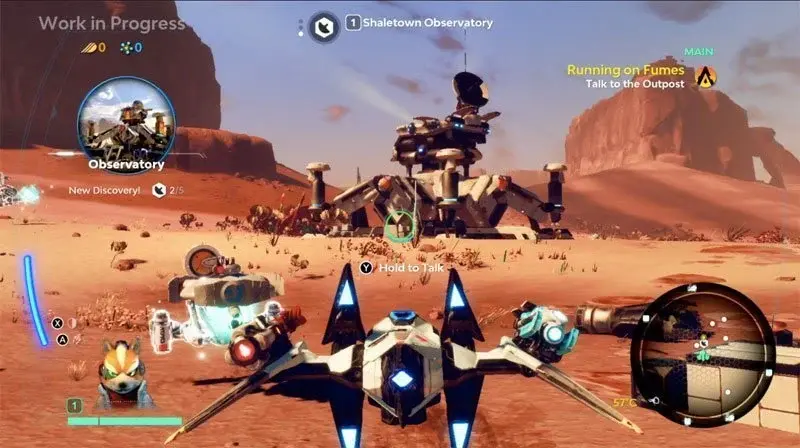Starlink: Battle for Atlas is a game in three parts. There is the toys to life component it was originally built upon, the engaging family-friendly space adventure that will appeal to a much wider audience and, of course, what will probably turn out to be the best Star Fox game in years, exclusive to the Nintendo Switch. You could conceivably play Starlink for any one of those elements, and largely ignore the other two, or embrace the complete package, and that’s why its future is bright.
During three hours with Starlink, I played the opening act – as Fox McCloud – on Nintendo Switch, before trading in my JoyCons for an Xbox One controller to roam the Atlas star system as I pleased. I only played Switch in docked mode, and was focused on Fox’s wily charms most of the time, but to my untrained eye, both platforms performed almost the same.
While Starlink’s marketing campaign is going to heavily rely on the toys, the game beneath is its biggest asset, and Ubisoft is releasing a digital version, which omits the toys, for that exact reason. If you would like the best of both worlds, you can buy the physical toys but swap between them digitally in the game.
Considering the toy starships are quite large and sit atop the controller, making it fairly heavy for young hands, that may still be the best option for little kids. On the other hand, for parents looking to enforce limits on screen time, a heavy controller may actually work in your favour. Starlink on Switch comes with its own JoyCon cradle for docked mode, and while I didn’t actually get to try it, handheld mode seems ideal for this type of game, where you’ll need to embrace the digital option.
The toys are durable and well built, although the pilots are much smaller than than other toys to life figures, so they fit inside their cockpits, which means they won’t match your amiibo collection. The wings and weapons feel sturdy as they lock into place, as does the ship when it snaps to the controller. However, I must confess a Ubisoft staffer had to show me how to do it the first time, as I tried to insert the pilot into the ship and then put the ship on the JoyCons – wrong! The pilot goes on first and then the ship is lowered on top. A 10-year-old won’t have that problem.
“We have play tests to ensure it feels natural to manipulate the toys and build them,” Creative Director Laurent Malville told me when I confessed to struggling at first and asked if kids inherently understand how to use the toys. “Yes, to answer your question, kids just seem to understand. It’s surprising to see young players just manipulating the starships and the pilot and they try things. Their process is to try something and see if it works. If it doesn’t work, they try something else and then find ‘oh that’s how it works’. It’s really fascinating to watch younger players interact with the game like this.”
This trial and error approach doesn’t stop with the toys.
“How they play with the toys is very similar to how they play the game,” added Malville. “They try things older games don’t seem to and if it doesn’t work that’s okay, they try a different version of it to figure out how it works. It’s really good to see them work together, you see one with their friends or parents and they say ‘look, that enemy is fire, you should use your blue ice weapon’ against it.’ They really want to help each other once they’ve figured something out. It’s awesome to see.”
Beneath all that, Starlink is a deep action-adventure game, with far more role-playing elements than I expected to find. Exploring the seven different planets in the Atlas system, you will have to find and identify new creatures, target weaknesses on enemies to defeat them, collect resources and earn XP to unlock new abilities on a skill tree, and don’t forget to modify your ride.
The number of playable characters depends on how many you purchase, either as a toy or digitally, and you can choose to forge through the story with one, or mix and match between them and their ships, which all handle differently. The PG focus comes back into view with the purposeful lack of death. Characters can’t die, but ships can temporarily be destroyed, promoting a swap to another one to continue. It’s motive to play as more than one character with several ships, otherwise your only option is to return to a nearby base.
Cruising around the Atlas system, my initial feelings mirrored those of our E3 preview. Starlink feels like a more narrative focused version of what No Man’s Sky was trying to sell us, but couldn’t deliver at launch, on a smaller and more concentrated scale. There are only seven planets, but they are seven unique and meaningful planets, and there are things to encounter between them, and while hyper-speed moves between them fairly quickly, it’s still big enough to feel like you’re moving through space at a fictional speed.
As I was the last to have my station shutdown, I left my ship cruising towards the star to see what would happen. I didn’t make it there in time and when I asked Laurent if it was possible to get there, he looked at me bewildered and said it’s possible to set a course for the giant glowing orb, but you’ll burn up long before you actually reach it and need to return to the safe heaven of the Equinox base. You know, because it’s a freaking star.
Obviously that’s the first thing I’ll be doing when now when Starlink launches in October.
Depending on the objective, planets can either be explored locked to the land (some objectives enforce this), or through the skies in crafts that have some cool tricks but are easy to fly. I must give Starlink props for its seamless transition between planets and space. Other games make this difficult or use cut-scenes to cover loading screens, but it’s all a fluid motion in Starlink. Point to space at a reasonable angle and within a seconds the heat shields fire up and you’ll pass through the atmosphere and into space, on route to leaving the planet’s gravity all together. Entering the planet is the reverse, but should you prefer to orbit around it, that’s just as intuitive. It’s simple, it’s fast and it’s seamless, which is exactly what I want from space exploration.
Following the mantra of not talking down to kids, combat isn’t water-downed. Expect a serious challenge on-land, in the skies and in space. Hit points are used to display damage, and you’ll need to mix and match weapons to counter enemies’ elemental strengths and weaknesses. The left and right triggers control weapons on either side, assuming you have two attached, while the right stick commands speed – and yes, there are dog fights in space and you can do a barrel roll.
While Starlink is more objective-based that other space exploration games, I only played through the first two acts, which are highly dependent on story and only introduce a few objectives on repeat. Narrative Designer Joshua Mohan told me that is all part of the plan when it comes to blending open world exploration with a linear story and keeping players busy.
“As you go through the story, you meet more and more people who offer you more outpost types, more ways to interact with the world, and more mechanics open up to you and ways to interact with the simulation underneath the hood,” said Mohan.
“What I find is every time you progress in the story, you learn a little more about the characters and the conflict, and you unlock a cool new feature that makes your interaction with the open world more interesting.”
That story was pitched to me as a coming of age narrative, something I haven’t come across in many action-adventure, let alone sci-fi space exploration, games.
“The story of Starlink is fundamentally about the team,” explained Mohan. “It has you arriving in Atlas where some of the characters have been members of the team for quite a while, some of them are new, and the first thing that happens is they lose their leader, the guy who formed the team and was guiding them.”
“The coming of age nature is really them figuring out ‘what do we do now, how do we go on and how do we reshape our relationships with each other?’ There’s a bit of team conflict, people stepping up to the plate and so it’s a coming of age theme as it applies to a team of individuals and them working through their relationships with each other as they get embroiled in this conflict in Atlas.”
Fox’s story is separate, and appears to be more parallel than intertwined, but you can play the entire game as Fox, in his Arwing, if you want and still experience everything Starlink has to offer.
Fox is “really there on his own quest,” said Mohan. “Luckily we have a rag-tag group of explorers and he’s part of a group of mercenaries, so he’s in Atlas on his own path, but the two groups connect.”
Fox is a guest star, after all Starlink was written and well into development when the head honchos at Nintendo liked what they saw at E3 2017. But in many regards this still feels like a Star Fox game. Even when I was playing on Xbox, the tone of the universe, the characters and even the combat felt at home in the Star Fox universe. The banter between Fox, Slippy, Peppy and the Starlink crew isn’t far removed from the SNES and Nintendo 64 classics. On Switch this really feels like the Star Fox game Nintendo probably won’t give us.
Starlink: Battle for Atlas will be released on 16 October 2018 for Xbox One, PS4 and Nintendo Switch.
Ben Salter travelled to Cologne, Germany as a guest of Ubisoft. The arrangement does not impact our Ubisoft coverage, nor limit additional Gamescom coverage. Ubisoft covered flights, accommodation and meals.
This article may contain affiliate links, meaning we could earn a small commission if you click-through and make a purchase. Stevivor is an independent outlet and our journalism is in no way influenced by any advertiser or commercial initiative.


